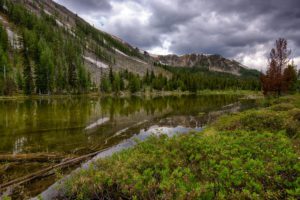by Janine Blaeloch of Western Lands Project and Katie Fite of Western Watersheds Project
Introduction
In recent years, a notable change has materialized in wilderness campaigns and legislation. Traditionally, wilderness legislation has simply designated the boundaries of the newly-protected areas and might have included “release” language that dropped other nearby areas from protection. But while past wilderness bills entailed compromises, a new breed of compromise has emerged, with wilderness designations tied to complex land-use legislation addressing issues that go far beyond the wilderness boundaries.
This trend has serious, negative implications for public lands policy and could have devastating consequences for Wilderness. These deals create a quid pro quo situation wherein wilderness protection is essentially “paid for” with balancing provisions in the same piece of legislation that facilitate development, privatization, and intensified land use – even in the very “wilderness” set aside in the deals. If this trend continues, the days of the stand-alone wilderness bill, along with the strict observance of the letter and spirit of the Wilderness Act, may become relics of the past.
We write this paper as advocates for public land and against its privatization and degradation. We also write out of concern for what quid pro quo wilderness may say about and mean to the future of grassroots environmental activism. In the last several months, dozens of grassroots groups and individual activists have joined us in expressing concern about the new wilderness phenomenon, and in issuing this analysis we hope to widen the discussion.
In this paper, we describe several examples of quid pro quo wilderness in Oregon, Nevada, and Idaho, look at the implications for public land policy, and, in the case of the Owyhee Initiative, set the context and anticipate the impact on the ground.






